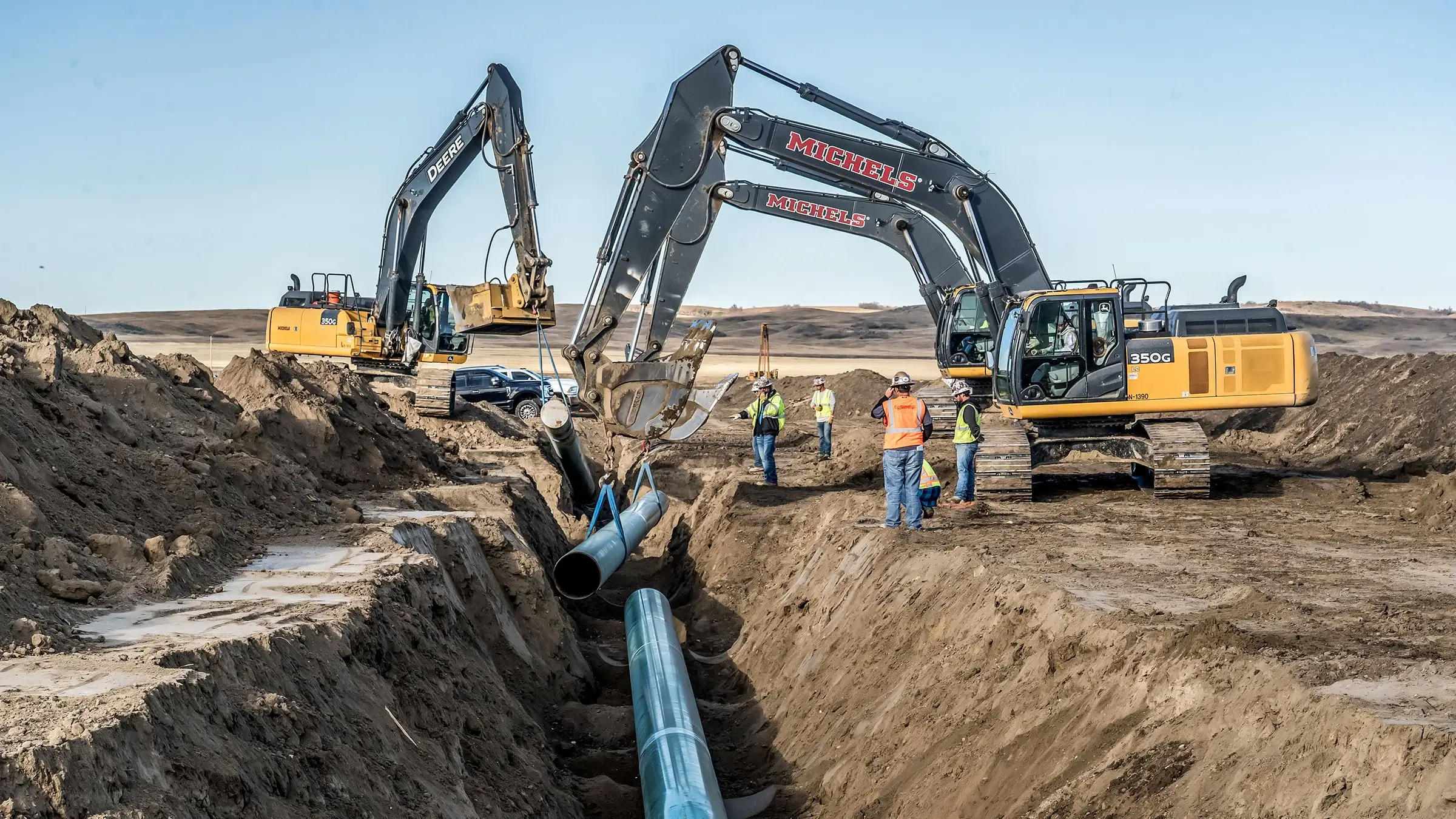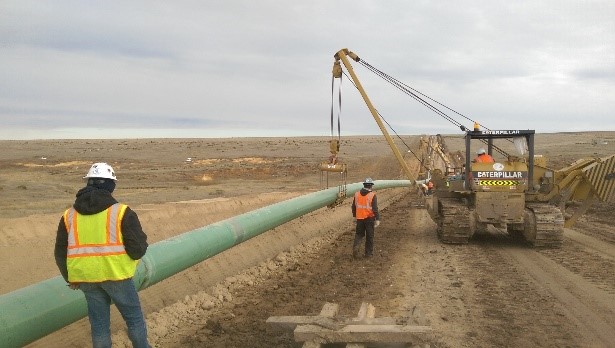Top Tools and Equipment for Professional Work With Creek Pipe Texas oilfield
What You Must Understand About Pipe Trenching Services: An In-depth Overview of Available Options
Pipe trenching services are important for the installation and upkeep of underground energies. They entail various approaches tailored to specific demands and atmospheres. Comprehending these methods is crucial for effective task execution. Each option offers its very own set of advantages and difficulties. As the demand for efficient utility management rises, understanding what to take right into account when selecting a trenching solution becomes imperative. What factors should one prioritize to ensure success?
Understanding Pipe Trenching: What It Is and Why It Matters
Although commonly forgotten, pipeline trenching is a vital procedure in various building and utility projects. This technique includes excavating slim trenches to assist in the installation of pipelines for water, gas, sewer, and telecoms. The relevance of pipeline trenching exists in its duty in guaranteeing that these necessary systems are appropriately integrated right into infrastructure, enabling the safe and effective delivery of required services.Proper trenching is vital for keeping the integrity of pipelines and decreasing threats related to soil erosion and collapses. It also allows for effective evaluations and upkeep of underground utilities. Additionally, recognizing the neighborhood policies and ecological factors to consider is crucial, as improper trenching can cause expensive hold-ups and lawful issues. Eventually, pipe trenching acts as the fundamental action that supports numerous building undertakings, making it a considerable facet of modern-day framework development.
Typical Trenching Methods for Below Ground Utilities
In the domain name of below ground energies, various trenching techniques play an important function in installation and upkeep - Creek Pipe Texas oilfield. The open-cut trenching method, directional boring technique, and hydro excavation process each offer unique benefits depending on the certain task needs. Recognizing these approaches is essential for effective and effective energy monitoring
Open-Cut Trenching Approach
Open-cut trenching is a commonly used method for mounting underground energies, specifically when the depth and size of the trench permit efficient gain access to. This technique involves digging deep into a trench along the proposed course of the energy, offering direct presence and ease of access for setup. It is specifically advantageous for tasks that require considerable excavation, as it facilitates quick installation and inspection. It also demands mindful planning to reduce disturbance to the surrounding location, including web traffic and existing frameworks. Open-cut trenching is most effective in open areas where the soil conditions are positive, however it might be limited in metropolitan environments due to the presence of existing utilities and other underground barriers.
Directional Boring Technique

Hydro Excavation Refine
Exactly how does hydro excavation stand out amongst common trenching methods for underground utilities? Hydro excavation uses high-pressure water and vacuum technology to safely remove soil, permitting specific digging around delicate below ground energies. This approach decreases the danger of harmful existing framework compared to conventional mechanical excavation. By employing water to loosen the dirt, hydro excavation provides a much less invasive method, reducing the capacity for soil compaction and making certain a cleaner worksite. Furthermore, the procedure enhances exposure throughout excavation, improving overall accuracy and effectiveness. Hydro excavation is especially beneficial in city locations where energy lines are largely packed, making it a recommended option for professionals focused on security and accuracy in below ground projects.
Benefits of Trenching Providers
While numerous approaches exist for setting up below ground utilities, trenching solutions supply unique advantages that make them a preferred selection for lots of projects. One significant advantage is the cost-effectiveness of trenching, as it commonly calls for less specialized devices contrasted to choices like hydro excavation. This often leads to reduced labor and functional expenses. Furthermore, trenching can fit a variety of energy types, including water, sewage system, and gas lines, providing convenience for contractors.Moreover, trenching enables efficient access to several lines in a single excavation, minimizing interruption to the surrounding area. The procedure likewise makes it possible for exact installation and repair, which is important for sticking to Home Page governing criteria and guaranteeing long-lasting reliability. Ultimately, trenching can here are the findings be carried out relatively promptly, minimizing task timelines and enabling faster service reconstruction. These advantages collectively make trenching solutions a functional alternative for lots of underground energy projects.
Disadvantages and Obstacles of Trenching
Despite the many advantages of trenching services, there are remarkable downsides and difficulties that must be considered. One significant difficulty is the capacity for dirt instability, which can lead to cave-ins, posturing threats to employees and devices. In addition, trenching can interrupt existing utility lines, requiring mindful preparation and sychronisation to stay clear of solution interruptions. The procedure can also be time-consuming, especially in urban areas where room is minimal and access is limited. Trenching may need extensive licenses and governing conformity, including intricacy and prospective hold-ups to jobs. Environmental worries, such as dirt disintegration and damage to regional ecosystems, can emerge from inappropriate trenching techniques. Lastly, the prices associated with trenching, consisting of labor and equipment, can intensify if unanticipated concerns occur throughout the job, making it essential for stakeholders to weigh these obstacles against the advantages when thinking about trenching services.
Key Variables to Take Into Consideration When Selecting a Trenching Solution
Choosing the appropriate trenching solution can greatly impact the success of a job. Several essential variables ought to be assessed to ensure a suitable option. The firm's experience and experience in trenching operations are necessary; a reputable service with a strong track record is generally extra trusted. Next off, examining the tools used is essential, as modern-day machinery can improve performance and precision. In addition, it is considerable to think about the range of solutions provided, including excavation depth and dirt type handling, to verify they satisfy specific project requirements.Another factor to evaluation is the company's online reputation; customer testimonials and reviews can provide understandings right into previous efficiency. Furthermore, getting detailed quotes that detail expenses and timelines will assist in spending plan monitoring. Confirming conformity sewer camera with local regulations and sector standards is important for preventing prospective lawful problems. By showing on these variables, customers can make an informed decision when picking a trenching service.
Safety And Security Measures in Pipe Trenching
In pipeline trenching, safety measures are important to making sure employee protection and website honesty. Trick elements include making use of individual safety devices, detailed excavation site assessments, and distinct emergency response methods. Carrying out these actions greatly minimizes risks related to trenching operations.
Personal Protective Devices
Safety and security in pipe trenching heavily depends on the correct use individual protective equipment (PPE) Workers ought to use tough hats to protect versus dropping items, in addition to high-visibility vests to boost their visibility on-site. Steel-toed boots are essential for foot protection against hefty devices and materials. In addition, gloves are necessary for hand safety, specifically when handling rough or sharp objects. Respirators might also be necessary in atmospheres with dust or dangerous fumes. Eye defense, such as safety goggles, ought to be used to protect versus debris. Listening to defense is essential in loud work settings. By sticking to PPE standards, workers can considerably reduce the risk of injury and ensure a much safer trenching operation.
Excavation Website Evaluation
Correctly checking the excavation website is a fundamental step in assuring a safe pipe trenching procedure. This procedure includes examining the site for prospective dangers such as below ground utilities, unpredictable dirt problems, and close-by frameworks. A comprehensive evaluation permits the identification of threats that can compromise worker safety and security. In addition, verifying the dirt type and dampness degrees can assist figure out suitable shoring approaches to avoid trench collapses. It is necessary to ensure that the site is free from particles which appropriate signs is shown to notify workers of continuous procedures. Routine inspections throughout the task can additionally help spot any type of adjustments in site conditions, allowing timely changes to security actions and work procedures.

Emergency Response Protocols
Emergency situation action protocols are important in mitigating risks connected with pipeline trenching operations. These protocols assure that all employees are prepared to act quickly and successfully in emergencies. Crucial element include routine security drills, clear interaction channels, and assigned fire escape. On top of that, first-aid packages and emergency situation contact numbers ought to be readily available on-site. Trenching procedures must additionally consist of treatments for dealing with dangerous scenarios, such as collapses or energy strikes. Training employees on acknowledging prospective risks and recognizing their roles during an emergency is vital. Maintaining an updated site safety and security plan can significantly improve reaction effectiveness. Generally, efficient emergency situation readiness promotes a more secure working setting and minimizes the effect of unforeseen incidents.
Expense Considerations for Trenching Services
Comprehending the financial effects of trenching solutions is important for task preparation and budgeting. The expenses related to trenching can differ extensively based on several variables, consisting of task dimension, dirt type, and deepness of the trench. Labor expenses commonly represent a considerable portion of the complete cost, as experienced drivers are required for effective implementation. Furthermore, equipment rental fees can add to the general budget, especially for specialized machinery.Site accessibility is another important aspect; difficult terrain may necessitate extra sources, enhancing expenses. Allowing and regulatory conformity can likewise include in expenditures, specifically in city areas where policies are stringent.Lastly, unexpected difficulties, such as experiencing existing energies, can cause unexpected prices and hold-ups. Consequently, acquiring detailed quotes from trustworthy trenching provider is important for precise budgeting and making certain effective job conclusion.
Frequently Asked Inquiries
The length of time Does a Typical Pipe Trenching Project Take?
The period of a normal pipe trenching job varies considerably based upon aspects such as depth, dirt problems, and project complexity. Usually, it can take anywhere from a couple of days to a number of weeks to complete.
What Devices Is Frequently Utilized in Pipe Trenching?

Are There Environmental Laws for Trenching Activities?
Environmental policies for trenching activities often call for conformity with regional, state, and government guidelines. These laws aim to lessen ecological interruption, safeguard water resources, and guarantee correct waste management during excavation and setup processes.
Can Trenching Services Be Combined With Other Construction Jobs?
Trenching solutions can indeed be integrated with various construction projects. By collaborating efforts, performances can be attained, minimizing disruptions while making certain that all essential infrastructure work is completed in a timely and affordable manner.
What Are Typical Dirt Enters Run Into in Trenching?
Common dirt types come across in trenching include clay, sand, silt, and loam. Each kind provides one-of-a-kind obstacles, affecting excavation approaches and security, demanding careful planning to assure safe and effective trenching procedures.